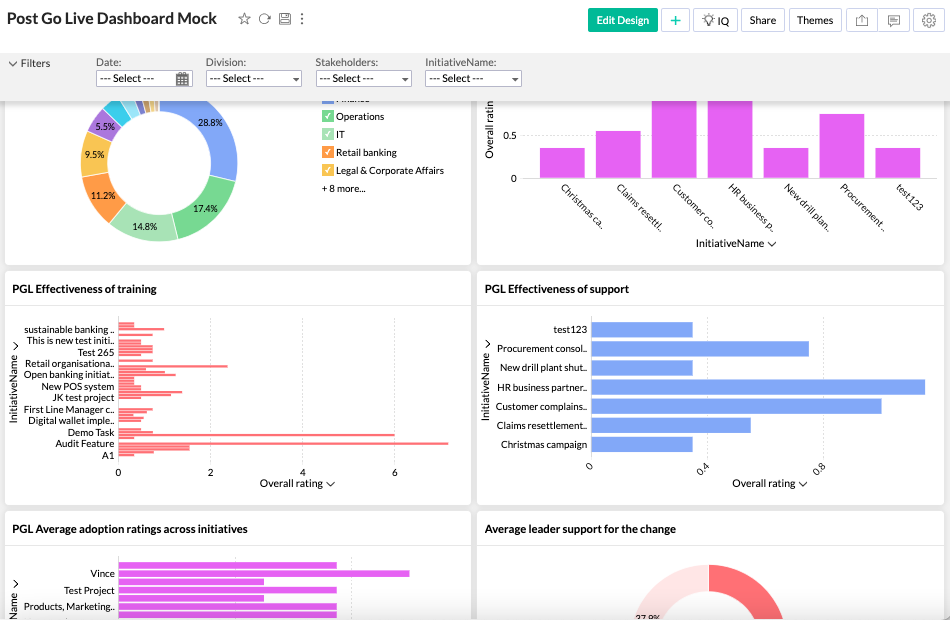In the ever-evolving landscape of change management, the critical question organizations must grapple with is not just about measuring progress but ensuring that the metrics employed actively propel initiatives toward success. It’s not enough for metrics to be mere indicators of activity; they must be strategic drivers, pushing the organization from a defensive stance of maintaining the status quo to an offensive position where goals are confidently achieved. This article delves into the practical realm of change management metrics, emphasizing the need for a carefully curated selection that instils confidence in reaching initiative goals and actively shapes the journey of transformation. From navigating leading indicators to understanding the change journey and judiciously attributing adoption, the path to success lies in metrics that move beyond sustenance to true progress.
Shifting from Defence to Offence
In the realm of change management, it’s crucial to move from a defensive mindset, where metrics merely sustain initiative progress, to an offensive one that propels them forward. This shift involves selecting metrics that not only measure progress but also exert significant influence on reaching initiative goals. Opting for ‘easy’ measures might provide a false sense of security, but it may not contribute to achieving the desired outcomes.
Consider a scenario where an organization aims to implement a new technology platform to enhance productivity. A defensive approach might focus on measuring the number of training sessions conducted or the completion rates. While these metrics have value, they don’t necessarily guarantee that the organization is on track to achieve its ultimate goal of improved productivity.
An offensive approach, on the other hand, would involve selecting metrics directly tied to the initiative’s success. For instance, tracking the time it takes for employees to adapt to the new platform or measuring the increase in task efficiency directly linked to the technology adoption. These metrics not only monitor progress but actively contribute to the realization of initiative goals.
Leading Indicators: Navigating Change Proactively
Leading indicators play a pivotal role in ensuring that change management metrics are forward-looking and provide visibility into the trajectory of initiative progress. Rather than relying solely on lagging indicators that reflect past performance, incorporating leading indicators allows organizations to anticipate and address potential roadblocks before they impede progress.
What are examples of lagging indicators? Newsletter readership, training completion rates, town hall attendance rates, system usage rates, etc.
Stakeholder engagement levels serve as a prime example of a leading indicator. High levels of engagement suggest a positive reception to the change, while declining engagement may indicate resistance or confusion. By tracking engagement throughout the change process, organizations can proactively address concerns, fine-tune communication strategies, and bolster support.
Time-to-adoption for pilot groups is another valuable leading indicator. If a small, representative group can quickly and successfully adopt the change, it bodes well for broader implementation. Monitoring and understanding the factors contributing to the success of the pilot group can inform adjustments for the larger rollout.
Evidence of targeted behaviours is a leading indicator that provides insights into the cultural shift associated with the change. Whether it’s embracing new collaboration tools or demonstrating desired leadership behaviours, these early signs of behavioural change are crucial leading indicators that align with the targeted initiative goals.
Examples of leading indicators:
- Stakeholder Engagement Levels:
o Frequency and quality of interactions in feedback sessions, town hall meetings, or focus groups.
o Participation rates in collaborative platforms or communication channels related to the change. - Time-to-Adoption for Pilot Groups:
o Speed at which the pilot group embraces the change compared to the planned adoption timeline.
o Identification and analysis of factors contributing to the quick or delayed adoption. - Evidence of Targeted Behaviours:
o Observation of employees exhibiting new behaviours associated with the change.
o Collection of success stories or testimonials showcasing positive behavioural shifts. - Managerial Involvement Levels:
o Measurement of the frequency and effectiveness of manager-led discussions about the change.
o Utilization rates of manager-specific training resources and tools. - Training Effectiveness:
o Assessment scores or feedback from participants to evaluate the understanding and application of training content.
o Identification of areas where additional training or support may be required based on early feedback. - Change Readiness Outcomes:
o Employee survey results assessing confidence in adapting to the change.
o Perceptions of leadership support, benefits understanding, and overall readiness for the impending change. - Adoption Rate of Support Resources:
o Utilization of resources such as help desks, support hotlines, or online knowledge repositories.
o Feedback on the accessibility and effectiveness of available support channels. - Feedback Loop Effectiveness:
o Implementation and assessment of feedback mechanisms to capture employee concerns or suggestions.
o Demonstrated responsiveness to feedback through tangible adjustments to the change plan. - Employee Advocacy:
o Identification of employees actively promoting the change within their teams.
o Recognition programs or forums that highlight and celebrate employee advocacy. - Cultural Alignment Metrics:
o Measurement of alignment between the desired change culture and the current organizational culture.
o Indicators reflecting the adoption of new cultural norms and values associated with the change.
Change Journey Metrics: Navigating the Path to Adoption
Change journey metrics are essential for understanding how the change journey is unfolding for different stakeholder groups. Before reaching the go-live stage, organizations must track the evolution of awareness, managerial involvement, training completion rates, communication readership, and change readiness outcomes.
Awareness levels among employees indicate the effectiveness of communication strategies. Are employees informed about the upcoming changes, and do they understand the reasons behind them? Metrics such as email open rates, participation in town hall meetings, or completion of pre-change surveys can shed light on the overall awareness landscape.
Managerial involvement levels are critical because managers play a pivotal role in guiding their teams through change. Metrics might include the frequency of manager-employee discussions about the change, the utilization of support resources, or the completion of manager-specific training modules.
Training completion rates are straightforward yet crucial metrics in assessing readiness. It’s not just about the quantity of completed sessions but also the quality of understanding demonstrated by participants. Incorporating assessments or feedback mechanisms within training modules can provide richer insights into the effectiveness of the training program.
Communication release readership levels help gauge the reach and impact of communication efforts. Metrics such as click-through rates on emails, views of informational videos, or attendance at virtual town hall meetings can provide valuable data on the engagement with key messages.
Change readiness outcomes encompass a range of metrics that collectively assess the organization’s preparedness for the impending change. This could include survey results measuring employees’ confidence in their ability to adapt, their perception of leadership support, and their belief in the benefits of the change.

Attribution of Adoption: Navigating the Complexity of Multiple Initiatives
In organizations with multiple concurrent initiatives, attributing adoption to specific initiatives can be challenging. Rather than engaging in complex discussions about which initiative deserves credit for particular business metrics, it is more productive to establish a small set of indicators that collectively guide the overall attribution of adoption toward specific business measures.
Consider a scenario where an organization is simultaneously implementing changes in technology, process, and organizational structure. Instead of attempting to isolate the impact of each initiative on metrics like productivity or customer satisfaction, focus on a set of indicators that collectively reflect the overall health and performance of the organization.
For instance, a combination of employee engagement scores, customer feedback trends, and operational efficiency metrics can provide a holistic view of the organization’s performance. This approach acknowledges the interconnectedness of initiatives and emphasizes the collective impact on key business outcomes.
Selective Reporting: Navigating Stakeholder Attention
In the realm of change management, less is often more when it comes to reporting metrics. Being targeted and selective in deriving and presenting a core set of change measures is more powerful than overwhelming stakeholders with a lengthy list of metrics. The goal is to drive behavioural change, and a concise set of focused metrics facilitates this objective.
Executive stakeholders, in particular, are unlikely to be impressed by an exhaustive list of change measures. Instead, they value insights that directly relate to the success of the initiative and its impact on overall business performance. Therefore, the emphasis should be on delivering a streamlined set of metrics that captures the essential aspects of progress and success.
For example, rather than inundating executives with a detailed breakdown of training completion rates, communication readership, and individual awareness levels, present a consolidated metric that encapsulates overall readiness. This could be a Change Readiness Index that combines various leading and lagging indicators to provide a comprehensive snapshot of the organization’s preparedness for change.

In addition to executive stakeholders, frontline employees also benefit from selective reporting. A focused set of metrics, communicated clearly and regularly, helps employees understand their role in the change journey and motivates them to contribute actively to the initiative’s success.
Navigating Success in Change Management
In the dynamic landscape of change management, selecting the right metrics is akin to navigating a complex terrain. Shifting from a defensive to an offensive posture requires strategic thinking, incorporating leading indicators, tracking the change journey, attributing adoption judiciously, and adopting a selective reporting approach.
Remember, the true measure of success lies not only in reaching metrics but in achieving the ultimate goals of the change initiative. By carefully choosing metrics that actively contribute to success, organizations can confidently navigate the complexities of change management and drive initiatives forward with purpose and precision.
To read more about change management metrics and measurement, check out our Change Management article folder.






